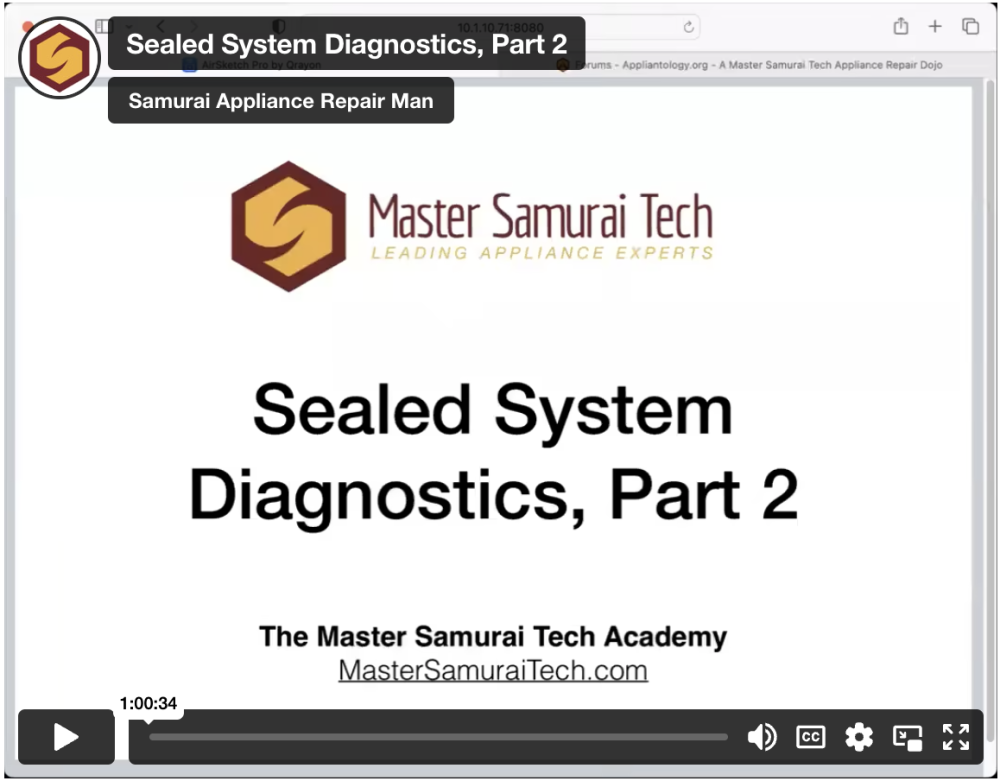A Practical Rundown of Sealed System Diagnostics
In this two-part Master Samurai Tech webinar series, we explore the nuances of sealed system diagnostics. Specifically, we're covering the nitty-gritty of applying our understanding of sealed system thermodynamics to real-world sealed system failures, such as refrigerant leaks, overcharges, and inefficient compressors.
Topics covered in the first part include:
- Sealed system temperatures and pressures and compressor amperage in a normally operating system
- Sealed system pressure variations based on ambient temperatures
- Identifying the symptoms of failed evaporator and condenser fans
- How refrigerant charge correlates to cooling capacity and compressor amperage
And in the second part:
- Early-stage refrigerant leak symptoms
- High-side refrigerant leak symptoms
- Vacuum and pressure: what the difference is, and how we measure them
- Low-site refrigerant leak symptoms
- Refrigerant undercharge symptoms
- Complete capillary tube restriction symptoms
- Causes of capillary tube restrictions
- The patented MST Gurgle Test™
- Inefficient compressor symptoms
- Short-cycling a compressor as a diagnostic tool
- Refrigerant overcharge symptoms
- ...and more!
Click below to get started with part 1 now! This webinar and over 100 hours of other webinars like it are all only available to premium tech members at Appliantology -- click here to become one today.
And click below for part 2:
-
.png) 1
1
-
 1
1








1 Comment
Recommended Comments